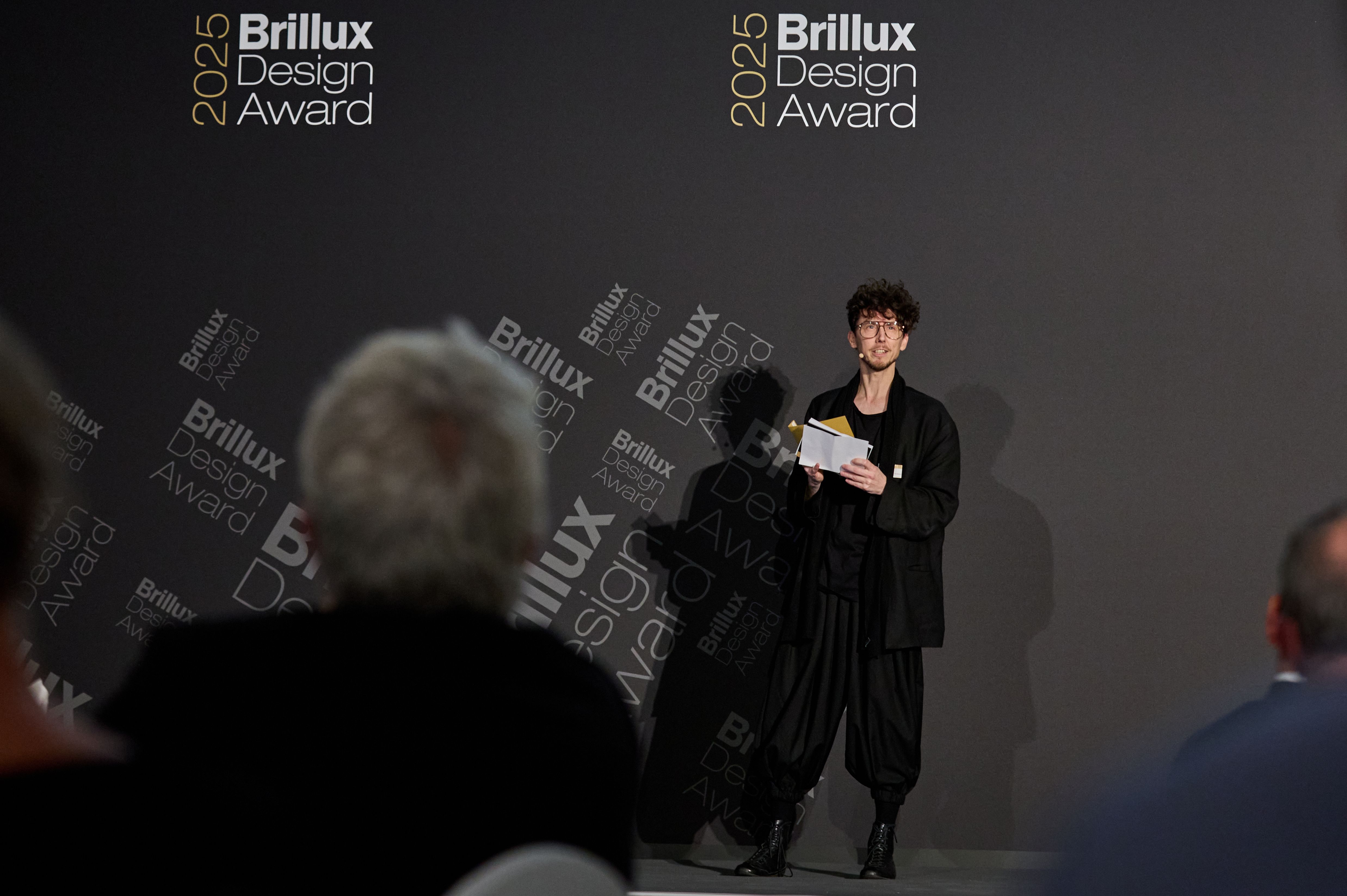
Wolfram Putz, Partner and CEO, speaks at Plenba Conference
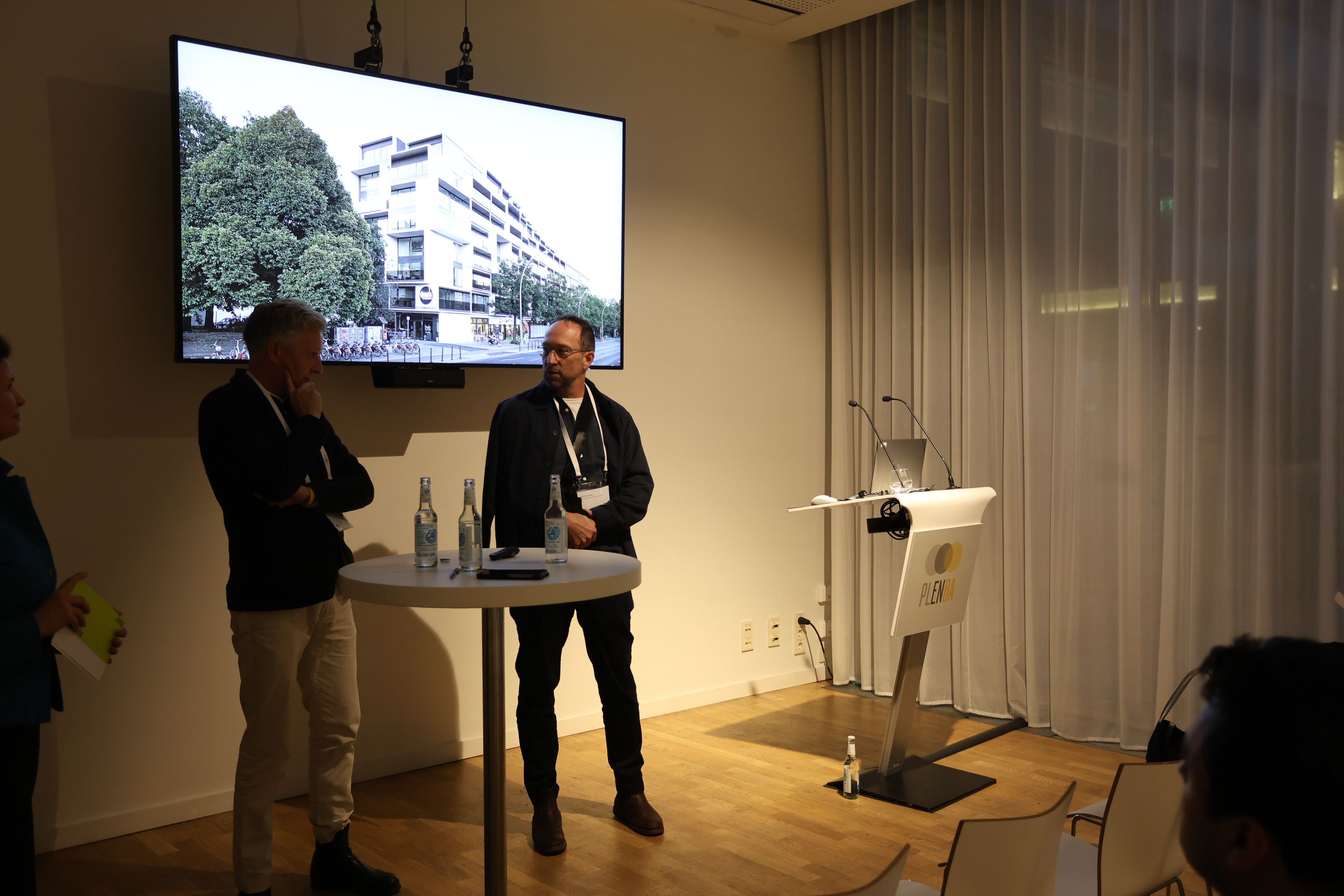

GRAFT partner Georg Schmidthals as a jury member at the Brillux Design Award ceremony


Graft Partner and CEO Wolfram Putz speaks at the Plenba Conference in Berlin on Industrialization and Serial Buiding techniques.

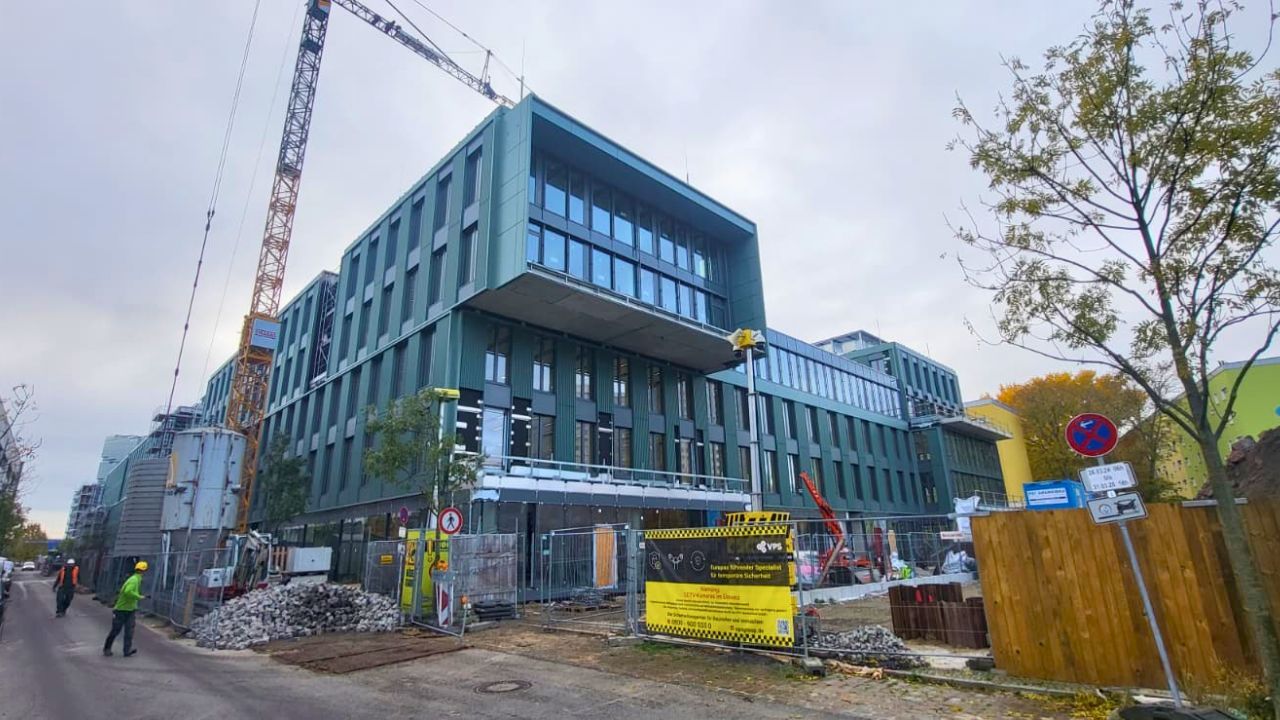
The "EDGE Friedrichspark" construction project in Berlin-Friedrichshain has reached another milestone. The striking green facade elements are currently being installed, while the building shell has now reached its full height. The project on the site of the former Wriezen train station clearly demonstrates how the area is gradually being transformed into a new office and commercial location.

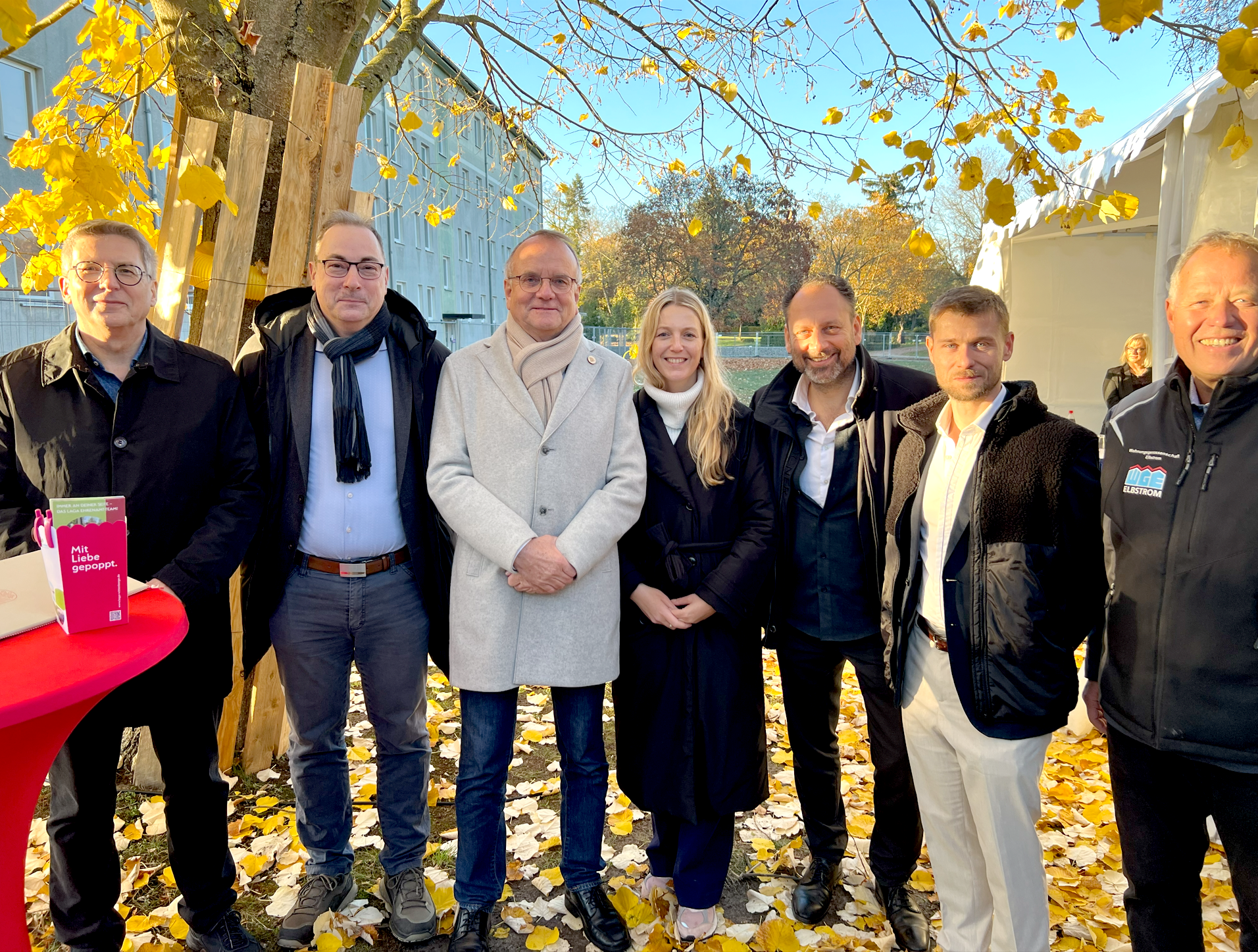
At the groundbreaking ceremony for the model block at Külzberg in Wittenberge on November 6, 2025, the project was presented to the public and the funding agreement with the State of Brandenburg was signed.
With this model block, GRAFT is redesigning a prefabricated building from the 1960s, transforming the existing small floor plans into new, flexible apartment layouts and types that address current issues such as demographic change. The goal is to offer needs-based housing at affordable prices.
The overall project also emphasizes the community aspect with improved amenities: a large roof terrace and a neighborhood meeting place on the ground floor are available for all residents to use and connect the interior spaces with the spacious outdoor area.
The project includes apartments with 2 to 5 rooms, accessible either without thresholds or barrier-free. In addition, modern two-story maisonette apartments with private gardens are being built on the lower floors.
Currently, the dismantling work is underway in the apartments, removing non-load-bearing walls, floors, and sanitary facilities.
Photo from left to right: Mayor Dr. Hermann, developer/cooperative board member Mr. Elverich, Minister in the Ministry of Infrastructure and Regional Planning of the State of Brandenburg Mr. Tabbert, Caroline Lossack (Graft), Thomas Willemeit (Graft), Daniel Finck (Graft GP), Elbstrom Housing Cooperative
Further information:

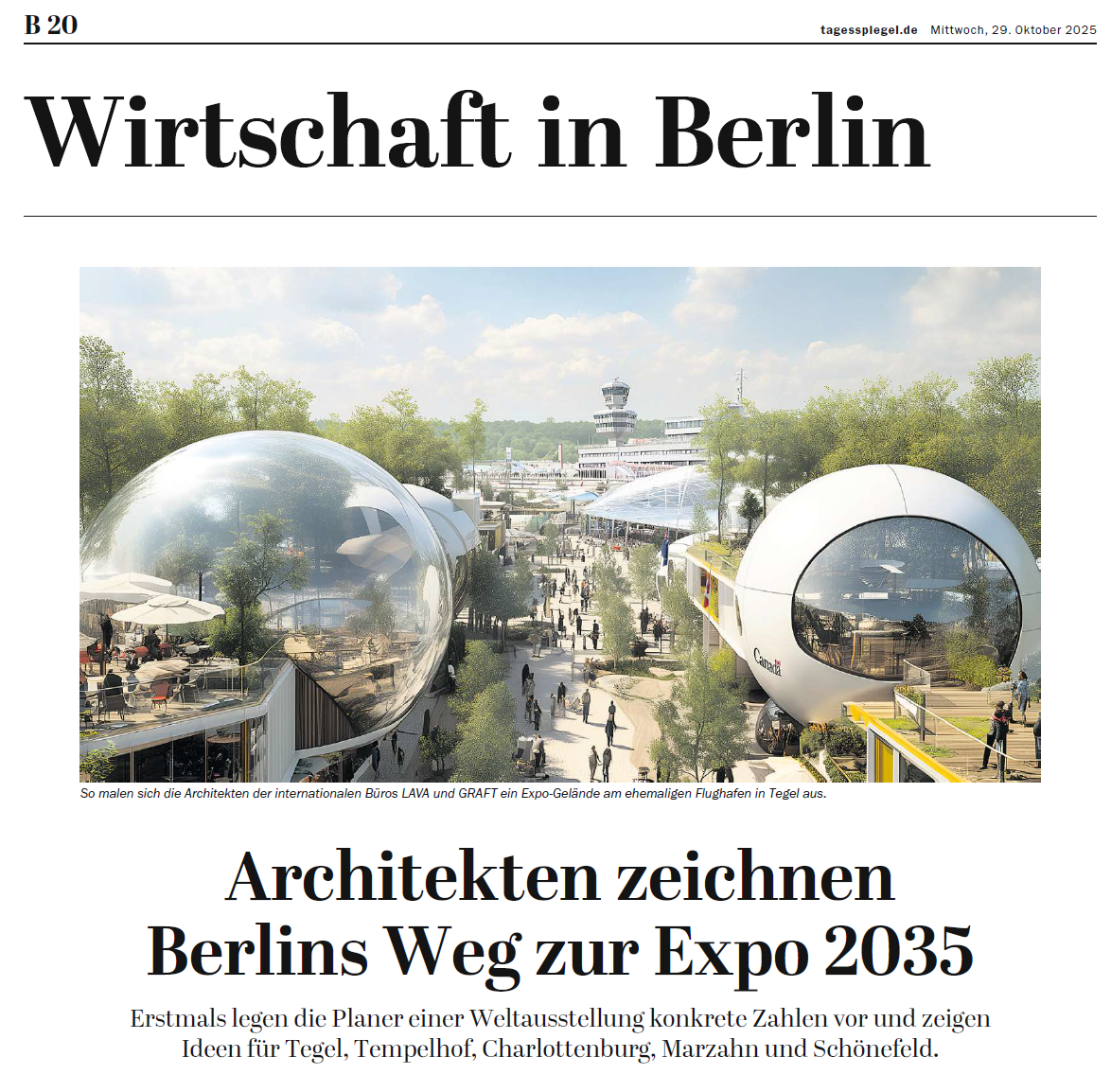
TSP. From October 29, 2025, excerpts:
The idea of the 2035 World Expo in Berlin is taking shape – both figuratively and literally: The circle of supporters is growing, and key aspects of the concept have now been established. For the first time, the planners are presenting images.
(...) To achieve these milestones, the Global Goals Berlin association, led by IT entrepreneur and former Chamber of Commerce president Daniel-Jan Girl, has professionalized its organizational structures in recent months. Girl is currently soliciting seed capital from a total of ten private companies and chambers of commerce to establish the operating company, Expo 2035 Berlin GmbH, on a solid footing: €2.5 million in capital is to be raised by the end of the year. The Berlin Chamber of Commerce and Industry (IHK Berlin) is confirmed as the first shareholder, having contributed €250,000.
(...) As a result, Girl can now present more tangible, or rather: visible, results! Together with partners from two renowned architecture firms, he has translated ideas for the Expo project, which began a few years ago with his guest article in the Tagesspiegel newspaper, into computer-generated images. The Tagesspiegel is permitted to publish these illustrations here for the first time.
The creators recognize the risk that viewers might read too much or too little into these visualizations and therefore clarify at length: An Expo in Berlin could indeed look like this in 2035. But it could also look completely different. These are "only" designs to illustrate the topic, which might otherwise remain too abstract.
(...) In a conversation at the Expo office, Christian Tschersich, partner at the Laboratory for Visionary Architecture (LAVA), and Thomas Willemeit, co-founder of the internationally renowned firm GRAFT, make it clear that they do not expect to automatically win tenders for the construction of central Expo pavilions should Berlin receive a successful evaluation. However, it also becomes clear that they could implement something. The LAVA team also designed, among other things, the German Pavilion at the Expo in Dubai (starting in 2020) and the Expo in Osaka, Japan, which closed in mid-October. They were currently working in Japan on a solution for dismantling, transporting, and reassembling the building – possibly in Berlin. Subsequent use as a school or daycare center is conceivable.
Expo 2035 is also featured on Entwicklungsstadt.de.
https://entwicklungsstadt.de/eine-stadt-als-ausstellung-so-koennte-die-expo-2035-in-berlin-aussehen

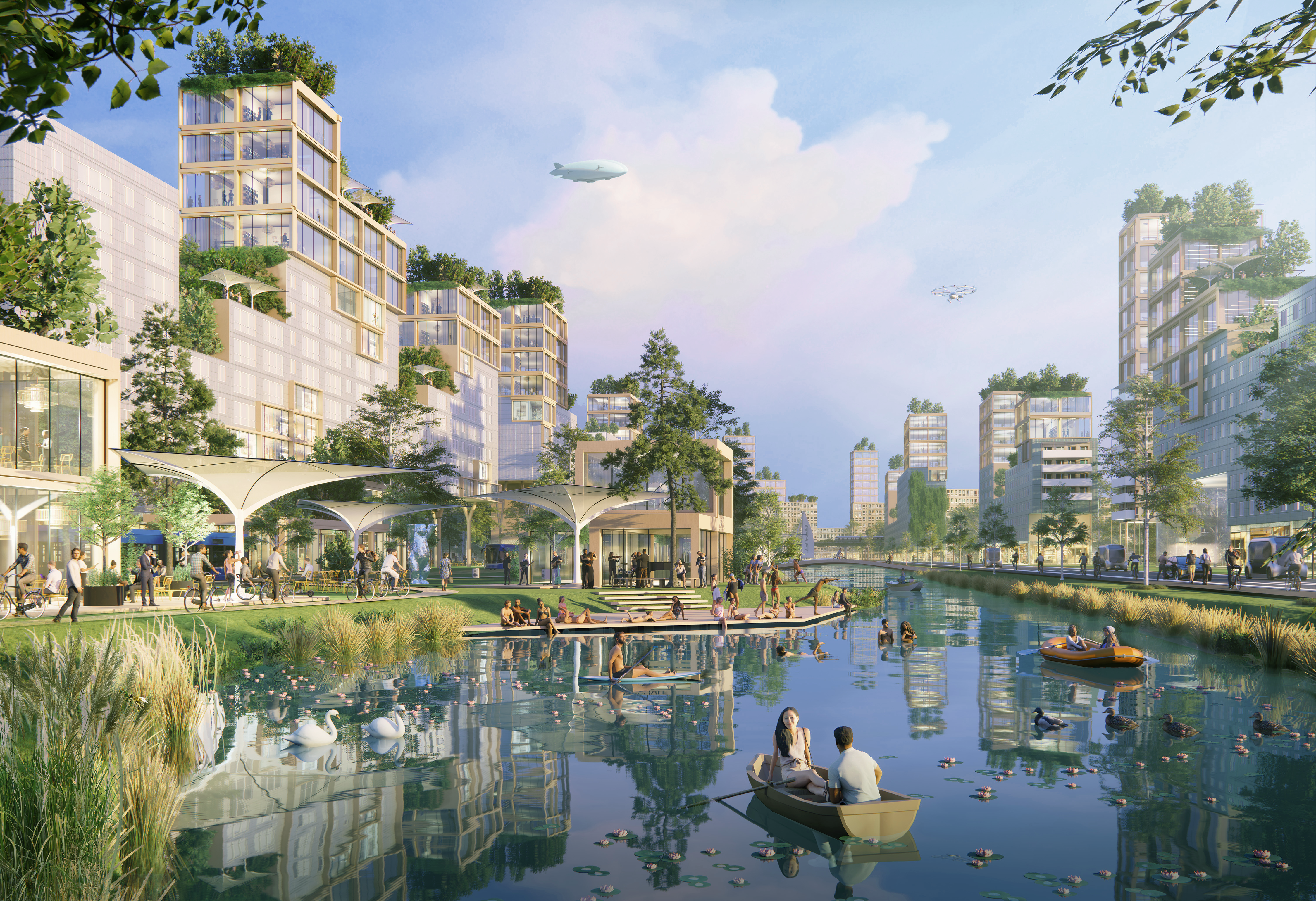
Contradictions are not the city's problem,
they are its quality!
Our attitude toward the future always reflects our current state and how we interpret it. The future only becomes a positive place when we understand that it arises from the present and from our current actions, and is just as worthy of protection as our origins. And this clearly shows why Berlin is the perfect place to think about the future of housing: Berlin's oft-cited incompleteness is the true strength of this city, because it allows us to continually rethink it. So, when we ask how we will live in the future, it's not just an architectural question, but a reflection of our attitude toward coexistence and our vision of a vibrant city.
The social and demographic shifts of recent decades have fundamentally changed the idea of housing as a private retreat within a traditional family model. Today, more people live alone or as single parents than ever before, and at the same time, often in apartments that neither in size nor in structure do justice to this lifestyle. Accordingly, we need housing models that expand the ideal of the idyllic home. Models in which the individual apartment becomes more compact, yet the quality of life is enhanced by communally usable spaces, neighborhood infrastructure, and architecturally intelligent transitions between private and public areas.
Affordable housing can also be created by making apartments smaller, but making them so intelligent in their layout and size that people want to live there. Flexible building structures allow units to grow with their lives as they progress through life. And this is precisely where architects are called upon to apply their experience and inventiveness to design well-functioning and flexible floor plans and achieve high quality.
This doesn't just apply to inner-city apartment blocks. Analogous principles are also feasible for single-family homes. Together with entrepreneur Jana Mrowetz, GRAFT has developed "Urban Cell," a concept for modular residential neighborhoods that aims to make home ownership affordable again with innovative structural, energy-related, and, above all, social solutions. Designed for European metropolitan regions, Urban Cell combines private residential units of various sizes with a communal clubhouse, coworking spaces, multi-purpose guest rooms, and various recreational and leisure activities. This flexibility in use allows one's own living space to grow (and shrink) in line with changes in life.
This creates new living space, but integrates it into a social network rather than simply taking up green space. The option of making do with less space is not based on purely economic considerations. Rather, it's about what quality we can imagine beyond our own four walls and how future neighborhoods develop identities, embedded in the apartments and their residents. And whether they offer their residents diverse opportunities for participation and encounters.
Such concepts for new buildings complement the challenges facing existing residential structures. After all, the housing of the future will largely take place in the buildings that already stand today. Maintaining, preserving, and improving this stock in a climate-neutral, or even better, climate-positive way is becoming increasingly central.
The means by which people's physical and mental health, as well as the habitats of animals and plants, can be protected have long been known: breaking up sealed surfaces, creating (or maintaining) fresh air corridors, integrating animal-friendly planting and trees, using recyclable materials, considering shading, collecting, storing, and reusing rainwater, and keeping space free for movement and interaction... The ideas and suggestions, both large and small, are numerous, and their success is well documented. What prevents us from implementing them and making our city healthier and better?
The lack of this necessary commitment in many places can also be explained by the low homeownership rate in Germany. Historically, due to the urgent post-war reconstruction and the East German planned economy, it is among the lowest in Europe. But homeownership strengthens responsibility, generates commitment, and promotes stability. When we talk about the future of housing, new forms of ownership that enable more people to participate must therefore be much more widely adopted: cooperatives or housing groups, for example.
We must not be drawn into a new plan.
We must not fall into a new planned economy. The political and bureaucratic mechanisms that currently block construction in many places are creating a situation in which the least controversial concept wins the contract, rather than the best. What is urgently needed is the courage to allow ideas to compete and to dare to experiment. Without trust in the stakeholders, there can be no movement and no innovation. This can sometimes also mean reopening discussion processes when conditions in the city have changed. We are thinking specifically of Tempelhofer Feld – because anyone who wants to stifle discussion about a partially different use is essentially building new walls.
We must approach digitalization processes with the same open mind. Artificial intelligence will not replace planners, but it will help simplify processes, increase design diversity, and reduce costs. This is already evident today in the field of serial construction, where AI-supported processes are capable of increasing the quality of buildings by individualizing previously uniform serial products.
This represents a major opportunity, as serial prefabrication generally leads to more cost-effective production and ultimately shorter construction times, which, especially in inner-city areas, translates into fewer construction sites, less space required, and shorter financing cycles. However, this predictability also requires diverse authors: a multitude of companies, materials, and manufacturing processes that enliven the field of serial construction with choice and competition.
Mobility is inextricably linked to housing. The way we move through the city significantly determines how and where we can live. Imagine if emission-free and quiet forms of mobility dominate the streets instead of the combustion engines that are common today – the entire urban fabric would change. Street spaces can be reimagined, areas repurposed and perceived differently; the main road with its through traffic is ultimately no longer a problem. When noise levels drop, fewer soundproofing measures are necessary, and thus construction costs are lower. A different environment for public uses on the ground floor is created, creating a city where I enjoy walking.
If mobility now also includes the vertical or underground dimension, we gain new space for urban quality of life. The example of the magnetic levitation train, with planted and photovoltaic-equipped tracks, could demonstrate how this can be done. Many other innovations can be imagined in a similar way if we move from a dichotomous either/or to an integrative, future-oriented way of thinking.
And here, we shouldn't stop at the city limits, because the Berlin-Brandenburg metropolitan region has long been a reality. Almost 340,000 people commute between Berlin and Brandenburg every day. With fast and reliable local transport connections, new opportunities open up in cities like Angermünde, Frankfurt (Oder), and Wittenberge.
There are many ways to make Berlin a city we enjoy living in. A city whose greatest quality is its unfinished status and its ability to welcome people who seek and desire change. It is not a city of the nobility or merchants and their guilds, but of second-borns, soldiers of fortune, and displaced persons. Huguenots, Russians, Turks, Kurds, Indians, Poles, Syrians, and all those for whom their small towns and villages have become too small. They are not here because all the decisions have already been made. They bring their ideas, their commitment, and their dreams with them, thus contributing to the city's ongoing transformation.
This culture of enabling must not disappear in favor of a culture of obstruction. If vested interests are conserved, if change is blocked, and if diversity is replaced by dogma, then Berlin will lose what made it great. Then the capital of the possible will become a city of missed opportunities. This makes the administrative reform that began in the spring all the more urgent. It should not only assign clear tasks and responsibilities to the employees of the Senate and the districts, but also grant them freedom and scope for action. The futuristic ICC is just as much a part of our city as the traditional eaves; high-rise buildings in Mitte are just as much a part of our city as the bungalows in Mahlsdorf. Living in the future therefore requires an attitude that sees the ambivalence of the city not as a problem, but as its essence. A city is always a compromise. It is loud and quiet, dense and open, planned and grown.
If we accept this, if we not only tolerate the differences but see them as a driving force, then housing will once again be associated with freedom for all people.

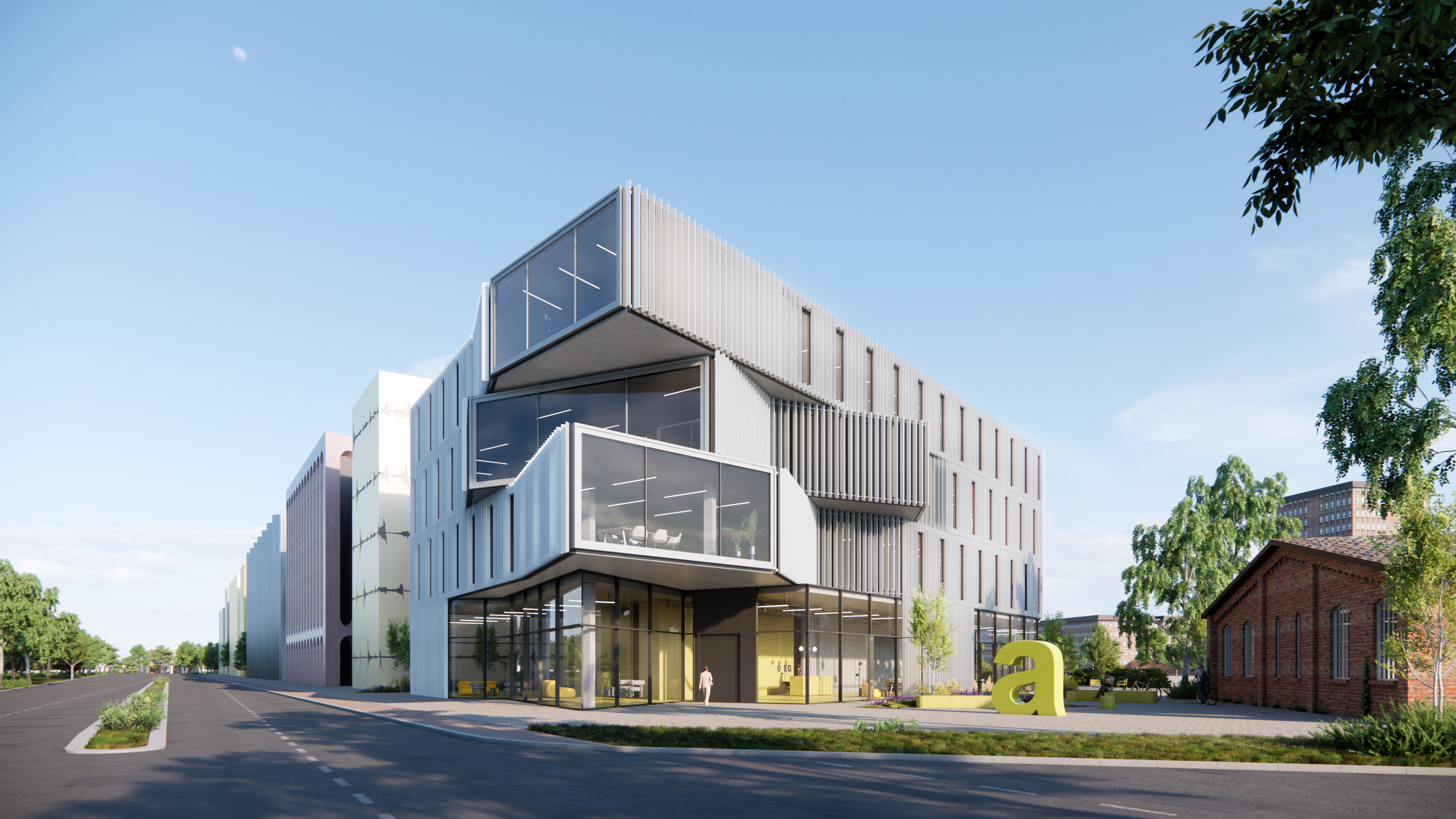
With Station A, Graft designs the entrance gesture of the Funkytown Campus in Berlin Treptow-Köpenick:
Graft's Station A opens the Funkytown Campus to the northeast and begins the row of buildings along Rummelsburger Landstraße. At this point, a dynamic building corner with projections and recesses sets a striking architectural accent in the urban space. Large-format windows emphasize the idea of arrival and outlook, opening up targeted sightlines to the city, the Spree River, and the historic broadcasting center.
With the transformation and revitalization of a property and an existing building on the site of the former GDR broadcasting center on Rummelsburger Landstraße – in the immediate vicinity of the Berlin Broadcasting Center and the Spree River – the Berlin-based project developer Trockland is opening a new chapter in the urban development of the Treptow-Köpenick district.
In collaboration with the eight Berlin architectural firms Julian Breinersdorfer, Graft Architekten Grüntuch Ernst, KSP Engel, Hillig Architekten, LAVA, LXSY, and Tchoban Voss Architekten, Funkytown is now taking concrete shape. Each firm has developed its own vision for one of the so-called "stations" and has taken on the façade design of one of the eight new buildings. In conjunction with the historic existing building "Block-E," which is being designed by the Leipzig-based architectural firm AIP, the eight stations form the Funkytown campus.

To mark the 100th anniversary of Eduard Arnhold's death, Villa Massimo is commemorating its patron at the site of his home in the Tiergarten district―today the Kulturforum and the newly dedicated Eduard-und-Johanna-Arnhold-Platz.
In addition to other works of art and presentations in memory of the great patron of the imperial era, the design by Rome Prize winner Lars Krückeberg 2018/2019 and GRAFT for a memorial garden for the Arnholds and a meridian in memory of the lost Tiergarten district will be on display. Plans, visualizations and a model illustrate the concept. Virtual reality glasses allow visitors to enter and experience the future site.
An event organized by the Deutschen Akademie Rom Villa Massimo in cooperation with the Association in Memory of Johanna and Eduard Arnhold and the Stiftung Preussischer Kulturbesitz.
Further information about the association, the exhibition and the anniversary can be found here (in German): arnhold-initiative.de
On Thursday, 3 July 2025, GRAFT founder Wolfram Putz will attend the Ukraine Expert Conference in Berlin, a symposium focusing on civil society, resilience and reconstruction in Ukraine. Organised by Be an Angel e.V., European Ukrainian Bridge and the Evangelical Academy, the event will bring together experts from various fields to discuss strategies for the period following the armed conflict in Ukraine.
During the fourth session, 'Rebuild – Digital Solutions & Practical Aid', Wolfram Putz will discuss innovative approaches and sustainable solutions alongside Adrienne Goehler (HOPE HOME-НАДІЯ), Nataliya Pryhornytska (Open Platform e.V. & Alliance of Ukrainian Organisations/Foundation EVZ) and Yuliia Chechotkina (100% Life). This session will take place from 16:25 to 17:25. His contribution will focus on architectural and urban planning perspectives that support reconstruction in Ukraine and strengthen community resilience.
The symposium will provide an important platform for fostering partnerships, exchanging knowledge, and collaborating on sustainable strategies for Ukraine's future. The results of the event will be presented at the Ukraine Recovery Conference 2025 in Rome.
When: Thursday, 3 Juli 2025 | 09:00–18:00
Where: Französische Friedrichstadtkirche zu Berlin, Gendarmenmarkt 5, 10117 Berlin
Host: European Ukrainian Bridge, Be an Angel e.V., Evangelische Akademie
Programme
The Hyperloop is a magnetic levitation train system in vacuum tubes that sets new standards for transportation: it is autonomous, on-demand, and has minimal energy requirements.
Under the leadership of mobility pioneers Deutsche Rail Operations DRO and Mode5, this visionary idea is currently being implemented. GRAFT is taking the lead for the overall design. Our aim is to create an equally novel travel experience for this new way of traveling, conveying comfort and expanding borders.
The Hyperloop can improve existing transportation gaps much faster than conventional transportation planning can, with an energy requirement that is 70% lower than that of regular high-speed trains. Thanks to its elevated construction, the Hyperloop can use existing traffic axes, such as the central reservation of freeways, for its route. This drastically speeds up the approval and implementation processes. Additionally, the tube could be multifunctional and, for example, generate more electricity than it consumes via solar panels along the route.
Overall, the Hyperloop is expected to have operating costs that are at least 80% lower, which means it can be funded privately in the future.
Visit our website to learn more: graftlab.com/hyperloop